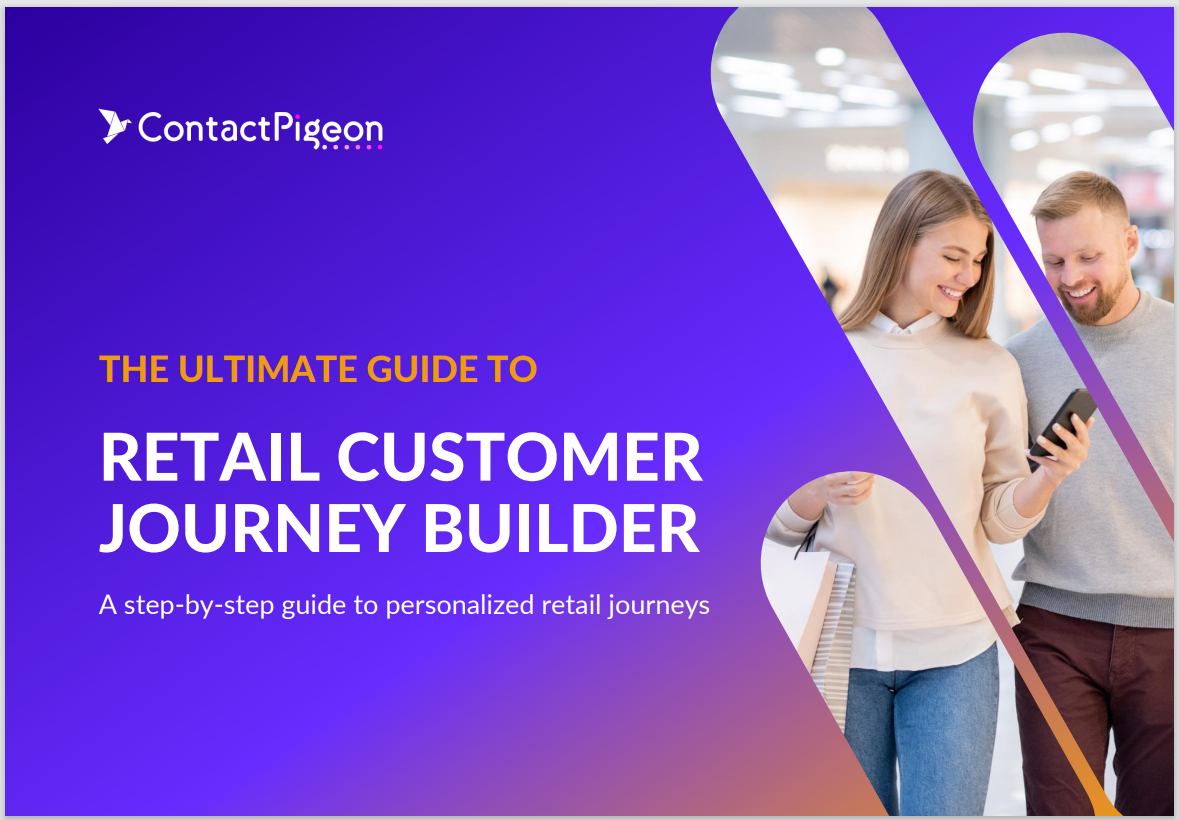Black Friday and Cyber Monday remain the crown jewels of the retail calendar, and in fashion, they represent both a massive opportunity and a high-stakes challenge. For CMOs, the real dilemma isn’t simply how to drive record-breaking sales; it’s how to strike the right balance between short-term revenue spikes and long-term brand equity, customer lifetime value, and loyalty. In other words, BFCM marketing for fashion is about far more than discounts, it’s about protecting your brand’s identity while capturing demand at scale.
In this article, we’ll explore five advanced insights designed for fashion retail executives navigating the complexity of BFCM. Each one goes beyond surface-level tactics to help you orchestrate strategies that fuel growth now, while also strengthening your customer relationships for the future. For a deeper dive into trends and best practices, explore our complete Black Friday Cyber Monday guide.
- Balance growth with brand equity. BFCM should reinforce exclusivity, elevate premium positioning, and deliver customer-first journeys rather than becoming a race to the bottom.
- Adapt to shifting consumer behavior. With 45% of shoppers starting early, mobile dominating transactions, and Gen Z hungry for exclusives, campaigns must reflect these new realities.
- Manage customer equity like a portfolio. Invest promotions in high-CLV segments, focus on retention yield, and protect against churn instead of chasing volume at any cost.
- Build identity-driven omnichannel ecosystems. Recognition across stores, apps, and digital channels fuels trust, advocacy, and lifetime value — placing CMOs as architects of identity orchestration.
- Transform discounting into desirability. Deploy scarcity models and AI-powered personalization to replace mass markdowns with cultural relevance, predictive merchandising, and year-round loyalty.
Understanding the evolving BFCM fashion consumer
The fashion consumer you’ll face this Black Friday is not the same as even two years ago. Shopping behavior has shifted dramatically, and brands that adapt their Black Friday marketing for fashion strategies to these changes will be the ones to capture wallet share.
- Earlier shopping windows. According to the NRF, 45% of consumers begin their holiday shopping before Black Friday. That means your core audience is already researching, comparing, and in many cases purchasing long before the official kickoff. For fashion retailers, it’s critical to design pre-BFCM engagement strategies that build anticipation and capture early demand.
- Mobile-first buying habits. The majority of fashion transactions now occur on mobile devices. BFCM campaigns must be optimized for seamless, fast mobile experiences, from landing pages and checkout to mobile app notifications. Mobile-first isn’t a nice-to-have; it’s the battlefield where fashion conversions are won or lost.
- Gen Z’s hunger for exclusivity. Younger shoppers, especially Gen Z, value limited drops, early access, and exclusivity over blanket discounts. This consumer segment responds better to scarcity-driven strategies (VIP-only sales, exclusive collaborations) than to generic percentage-off promotions.
Leveraging data & insights for smarter BFCM decisions
To make smarter BFCM decisions, fashion leaders need to ground their strategy in consumer behavior data. The table below highlights five key trends shaping Black Friday & Cyber Monday in fashion, along with the strategic implications and brand examples every CMO should note.
| Consumer Trend | Data Point | Strategic Implication | Brand Example |
|---|---|---|---|
| Earlier Holiday Shopping | 45% of U.S. consumers plan to start browsing and buying before November (NRF, 2024) | Engage customers early with pre-BFCM exclusives and early-access events | Zara |
| Mobile-First Purchasing | Smartphones drove 54.5% of U.S. online holiday purchases (Adobe, 2024) | Prioritize mobile UX and frictionless checkout to maximize conversion | H&M |
| Personalization over Discounts | 82% of customers say personalization influences their brand choice (Medallia, 2024) | Shift focus from generic discounting to AI-driven personalized offers | Nike |
| Gen Z & Exclusivity | Gen Z favors drop culture, exclusive collaborations, and early-access offers (License Global, 2025) | Leverage limited-edition drops and VIP access to drive engagement | Gucci |
| Omnichannel Journey | NRF reports most holiday shoppers research online before purchasing in-store (NRF, 2024) | Integrate cross-channel offers for consistency and upsell opportunities | Sephora |
Insight #1: From CLV to customer equity management in fashion
For fashion CMOs, success can no longer be measured by campaign ROI or single-day revenue spikes. The real mandate is to grow customer equity, the combined lifetime value of your customer base, and to manage it with the same discipline as an investment portfolio. That means balancing three levers: acquisition cost, retention yield, and loyalty risk. BFCM should not be treated as a margin sacrifice but as a strategic allocation decision within this customer equity portfolio. The question is not “How much can we discount?” but “How does this campaign strengthen the long-term yield of our customer base?”
The economics are clear: a 5% increase in customer retention can generate 25% to 95% higher profits (Harvard Business Review). In other words, the retention impact of your BFCM strategy will outweigh any short-term gains in gross merchandise value. By adopting a portfolio mindset, fashion leaders can:
- Direct incentives toward segments with the highest lifetime potential.
- Protect margins by differentiating between loyal customers and price-driven shoppers.
- Position retention not as a marketing metric, but as a lever of enterprise value.
The outcome: BFCM becomes less about transactional discounting and more about compounding customer equity, the true measure of brand value in fashion retail.
Insight #2: Orchestrating fashion identity-driven journeys
In fashion, omnichannel is no longer about pushing the same promotion through multiple touchpoints. The real competitive edge lies in identity orchestration, recognizing and unifying each shopper across stores, mobile apps, eCommerce, and media. When brands achieve this, they unlock the ultimate strategic asset: customer trust. Shoppers who feel recognized, not just retargeted, reward brands with loyalty, higher CLV, and stronger advocacy. Consistency of identity across channels becomes the differentiator between transactional retailers and true fashion leaders.
The data is clear: 73% of shoppers engage across multiple channels before making a purchase (Harvard Business Review). For CMOs, this means the task is no longer simply journey design; it is the architecting of identity-driven ecosystems. These ecosystems don’t just convert, they compound long-term value by building recognition into every interaction.

Build smarter customer journeys and activate AI-driven personalization for repeat purchases.
Insight #3: Balancing scarcity with premium brand positioning
Fashion has always thrived on a paradox: it must be widely visible, yet selectively accessible. The challenge in the new BFCM era is how to orchestrate exclusivity without eroding equity. Gen Z in particular has redefined the scarcity equation. According to the Gen Z Fashion Brand Licensing Report (License Global, 2025), younger shoppers value limited collaborations, early access privileges, and drop culture as much as price. Scarcity isn’t just a sales tactic for them, it’s a signal of cultural relevance and brand authenticity.
This creates a sharp contrast for BFCM strategy:
- Mass markdowns flood the market, boost short-term volume, but dilute brand positioning.
- Curated exclusives, algorithmic micro-drops, loyalty-only collections, and time-gated access, generate desire, deepen loyalty, and reinforce premium status.
Dynamic scarcity models allow fashion brands to replace discount dependency with desirability orchestration. Done well, exclusivity doesn’t erode margins, it amplifies them, elevating the brand into a cultural reference point rather than a commodity player. For fashion leaders, Black Friday marketing for fashion should be less about racing to the bottom and more about deploying scarcity as a premium brand-building tool.
Insight #4: AI-Powered Personalization & Predictive Merchandising in Fashion Retail
Black Friday should no longer be about blanket discounts and margin erosion. With AI-powered personalization, fashion retailers can transform BFCM into a precision game, serving the right offer, on the right channel, to the right customer segment.
The opportunity is twofold:
- Predictive merchandising anticipates demand, flags high-value buyers, and prevents wasted incentives on one-off bargain hunters.
- AI-driven personalization orchestrates dynamic, cross-channel journeys that recognize each shopper’s intent in real time.
And the consumer side is ready: Salesforce reports that one-third of consumers would rather purchase a product through automated, AI-driven interactions than with a human sales associate (Salesforce).
For CMOs, this signals a decisive shift from reactive discounting to proactive demand shaping. Instead of slashing prices across the board, fashion leaders can use Customer Data Platforms (CDPs) + AI agents to predict which customers deserve exclusives, which channels will convert, and which buyers are worth defending with loyalty incentives.
Want to make sure your Black Friday marketing strategy is bulletproof? Use our Black Friday Checklist: A 52-Spot Last-Minute Audit for Retailers to get ahead of the big weekend.
Insight #5: Extending BFCM into year-round loyalty
Black Friday and Cyber Monday should serve as the gateway to lasting customer relationships, not just short-lived revenue spikes. Every transaction is an opportunity to enroll shoppers into a broader loyalty ecosystem. By blending emotional connection, exclusive access, and community-driven experiences, they create a protective barrier around their customer base, insulating it from discount-driven churn and the pull of fast-fashion commoditization.
Exclusivity is the cornerstone of this moat. From early access to collections, to loyalty-only experiences, to members-first collaborations, exclusivity transforms BFCM shoppers from one-time deal seekers into long-term brand advocates. In this model, discounts are simply the handshake; the real value is the membership that follows. The ultimate goal is not just to optimize seasonal campaigns, but to act as the steward of brand insulation, turning peak-season momentum into year-round loyalty yield.
The future of fashion BFCM is data-driven
In 2025, Black Friday marketing for fashion must balance immediate sales with long-term brand equity. The holiday shouldn’t become a race to the bottom, but rather a stage to highlight exclusivity, seamless customer journeys, and strategies that put the shopper first. Fashion CMOs who approach BFCM through the lens of customer lifetime value, omnichannel orchestration, operational excellence, and loyalty ecosystems will protect both margins and brand desirability. Done right, BFCM becomes more than a seasonal spike, it becomes the spark that strengthens fashion brands year-round, turning short-term momentum into lasting advantage.



![Benchmarking Growth Strategies of Top Fashion Retailers [Study]](https://blog.contactpigeon.com/wp-content/uploads/2025/11/top-fashion-retailers.jpg)